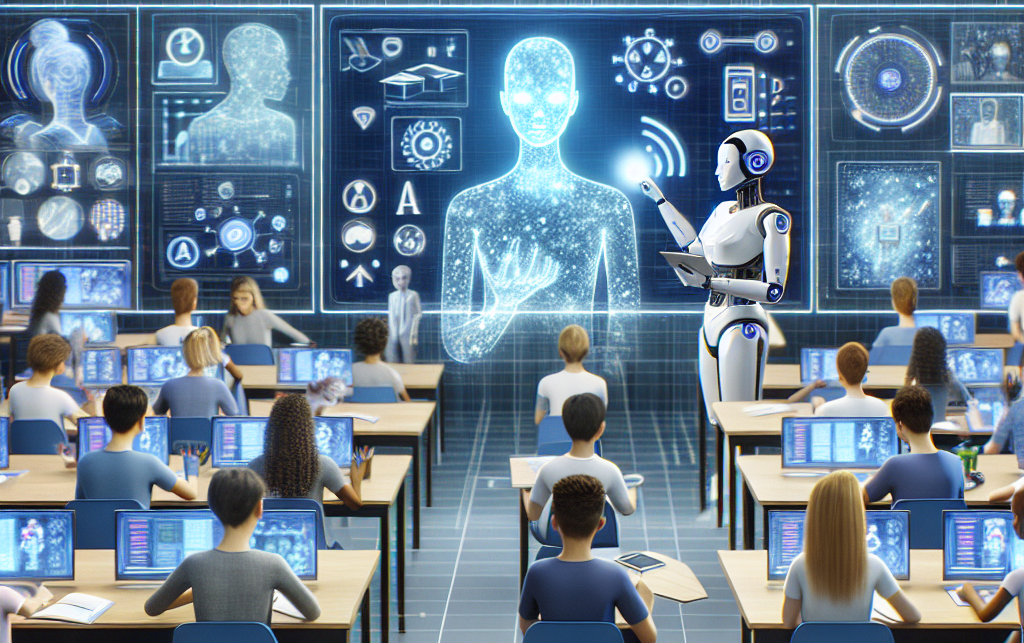From AI Tutors to Smart Classrooms: The Impact of AI on Education

In recent years, Artificial Intelligence (AI) has rapidly transformed various sectors, and education is no exception. From AI tutors to smart classrooms, the integration of AI technologies is revolutionizing the way we teach and learn. Let's explores the significant impact of AI on education, highlighting its benefits, challenges, and future potential.
The Rise of AI Tutors
AI tutors are one of the most prominent applications of AI in education. These virtual educators use algorithms and machine learning to provide personalized tutoring to students. Unlike traditional tutoring, AI tutors can offer tailored assistance based on individual learning styles and paces. For instance, platforms like Khan Academy and Duolingo employ AI to adapt their lessons to the needs of each learner, ensuring that no student is left behind.
Benefits of AI Tutors
- Personalized Learning: AI tutors can analyze a student's strengths and weaknesses, providing customized lessons and feedback.
- Accessibility: Students can access AI tutors anytime and anywhere, making learning more flexible and convenient.
- Scalability: AI tutors can accommodate an unlimited number of students, addressing the shortage of qualified human tutors.
Challenges of AI Tutors
- Data Privacy: The use of student data by AI systems raises concerns about privacy and security.
- Lack of Human Interaction: While AI tutors are effective, they cannot replace the emotional and social interactions provided by human teachers.
- Equity Issues: Not all students have equal access to the technology required to benefit from AI tutors.
Smart Classrooms: The Future of Learning Environments
Smart classrooms represent another significant advancement in AI-driven education. These technologically enhanced learning spaces utilize AI to create interactive and engaging experiences for students. From smartboards to AI-powered educational software, smart classrooms are designed to foster a more dynamic and efficient learning environment.
Benefits of Smart Classrooms
- Enhanced Engagement: Interactive tools and multimedia content make learning more engaging and enjoyable for students.
- Real-time Feedback: AI systems can provide instant feedback to both students and teachers, allowing for timely interventions and support.
- Efficient Classroom Management: AI can automate administrative tasks, such as attendance tracking and grading, freeing up more time for teaching.
Challenges of Smart Classrooms
- Cost: Implementing smart classroom technologies can be expensive, posing a barrier for underfunded schools.
- Training: Teachers need proper training to effectively use AI tools, which can be time-consuming and require ongoing professional development.
- Technical Issues: Reliance on technology means that technical glitches or failures can disrupt the learning process.
The Future Potential of AI in Education
The future of AI in education is bright, with ongoing advancements promising even more innovative solutions. Potential developments include:
- AI-Driven Curriculum Design: AI could assist in designing personalized curricula that cater to the diverse needs of students.
- Enhanced Assessment Methods: AI could develop more sophisticated assessment tools that evaluate not just academic performance but also critical thinking and creativity.
- Global Collaboration: AI could facilitate global learning communities, allowing students from different parts of the world to collaborate and learn from each other.
Conclusion
From AI tutors to smart classrooms, the impact of AI on education is profound and multifaceted. While there are challenges to overcome, the benefits of AI in creating personalized, engaging, and efficient learning experiences are undeniable. As technology continues to evolve, the potential for AI to transform education and unlock new opportunities for learners around the world is immense. Embracing these advancements while addressing their challenges will be key to shaping the future of education.
